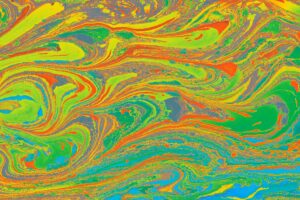From ancient shamanic rituals to the counterculture of the 1960s, psychedelics have played a significant role in human culture for thousands of years. Many of these substances, such as Ayahuasca and magic mushrooms, have held spiritual significance for indigenous cultures, while substances like LSD later became intertwined with Western counterculture. Let us delve into the fascinating world of psychedelic substances, examining their historical and cultural contexts.
Early evidence of psychedelic use can be traced back to shamanism, a spiritual practice that often employs altered states of consciousness for healing and transcendence. Many indigenous cultures used psychotropic substances such as Ayahuasca, a powerful hallucinogenic brew utilized by Amazonian tribes for spiritual and medicinal purposes. The use of Ayahuasca in shamanic practices is believed to have persisted for thousands of years, with the earliest recorded account dating back to 1768 (source). This brew is still used today in traditional spiritual ceremonies and as an alternative form of therapy.
The use of magic mushrooms, specifically those containing the psychoactive compound psilocybin, dates back even further. Artwork and carvings depicting mushroom-like figures have been found in African, European, and Mesoamerican archaeological sites, potentially suggesting the use of such substances in shamanic rituals thousands of years ago. The relationship between indigenous Mexican cultures and the use of psilocybin-containing mushrooms was documented by Spanish priests during the colonial period, who described mushroom-induced visions and trances as devilish and heretical in nature.
The rise of modern psychedelic culture can be attributed to the widespread synthesis and distribution of LSD in the mid-20th century. Swiss chemist Albert Hofmann first synthesized LSD in 1938, hoping to develop a new pharmaceutical product. However, it wasn’t until 1943 that Hofmann accidentally discovered the drug’s psychedelic effects after accidentally ingesting a small amount. Initially studied for its potential psychiatric applications, LSD’s popularity exploded after being introduced to the 1960s counterculture.
A key figure in the growing LSD movement was psychologist Timothy Leary, who believed that the substance had the ability to transform human consciousness radically. Leary famously implored his followers to “tune in, turn on, drop out,” urging them to embrace a more liberated and spiritually awakened lifestyle through psychedelic experiences source. Through these exploits, Timothy Leary became an icon of the 1960s counterculture and a proponent of the psychedelic movement.
As the popularity of psychedelics like LSD soared in the 1960s, reactions from the media and political establishments became increasingly negative. Many observers saw these substances as a threat to social order and traditional norms and methods of thinking. In response to mounting concerns, the US government classified LSD and other psychedelics as Schedule 1 controlled substances, thus imposing strict bans on their use and research.
Despite this resistance, the cultural impact of the psychedelic movement is undeniable. Many influential figures, such as musicians Jimi Hendrix and The Beatles, credited psychedelic experiences with stimulating their creativity and shaping their worldviews. These cultural icons helped popularize the use and image of psychedelics, further intertwining their histories with the spirit of countercultural rebellion.
The rich history and culture of psychedelics goes beyond their association with the 1960s counterculture. For many indigenous cultures, these substances have long held spiritual significance, providing a link between traditional worldviews and the challenges of the modern world. As psychedelic research continues to break new ground, particularly in mental health treatments and therapy, it is essential to remember and respect these substances’ cultural roots and historical legacy.
In conclusion, from shamanism in indigenous cultures to the rise of the counterculture movement in Western societies, psychedelics have woven a tapestry through human history that continues to impact our culture today. With new research findings and an increasing willingness to reassess societal attitudes, the magical and mysterious world of psychedelics still has much more to reveal about the vast potential of the human mind.






